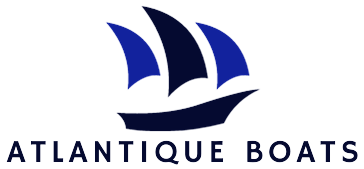The sinking of the Titanic in 1912 remains one of the most iconic maritime disasters in history. But beyond the tragedy and the heart-wrenching stories of its passengers, the Titanic also serves as a fascinating point of comparison to modern ships. As we marvel at the technological advancements that have taken place over the past century, it is inevitable to ponder how the Titanic would fare against the behemoths of the sea today. In this article, we will delve into the world of maritime engineering and explore the key differences between the Titanic and modern ships, shedding light on the remarkable progress that has been made in shipbuilding and safety.
When the Titanic set sail on its maiden voyage, it was hailed as a marvel of its time. Its grandeur and opulence were unparalleled, and it was considered the epitome of luxury travel. However, with hindsight, we now recognize the shortcomings of its design and construction. The Titanic lacked crucial safety features that are considered standard on modern ships, such as a sufficient number of lifeboats for all passengers, advanced communication systems, and comprehensive watertight compartments. These oversights proved fatal, leading to the loss of more than 1,500 lives.
Fast forward to the present day, and we find ourselves amid a new era of shipbuilding. Modern ships are equipped with state-of-the-art technology, including satellite navigation systems, advanced radar and sonar capabilities, and sophisticated communication networks. Furthermore, stringent safety regulations now require ships to have a comprehensive network of watertight compartments, ensuring that even in the event of a breach, the vessel remains afloat. Join us as we explore the contrasting features and engineering marvels that distinguish the Titanic from its modern counterparts, and gain a deeper appreciation for the incredible progress that has been made in the realm of maritime transportation.

Titanic Compared to Modern Ships
The sinking of the Titanic in 1912 remains one of the most tragic and iconic events in maritime history. As the largest and most luxurious ship of its time, the Titanic represented the epitome of technological advancement and opulence. However, when comparing it to modern ships, the differences are stark. In this article, we will explore how the Titanic measures up to modern vessels in terms of size, safety measures, and amenities.
Size and Capacity
When the Titanic was launched, it was considered the largest ship in the world, measuring 882 feet long and weighing approximately 46,000 tons. It had a total capacity of around 2,435 passengers and 892 crew members. In comparison, modern cruise ships such as the Symphony of the Seas, operated by Royal Caribbean International, surpass the Titanic in size. The Symphony of the Seas is a staggering 1,188 feet long and weighs over 228,000 tons, with a maximum capacity of 6,680 passengers and 2,200 crew members.
The increase in size allows modern ships to accommodate a much larger number of passengers and provide a wider range of amenities and entertainment options. From luxurious staterooms and multiple dining options to theaters, water parks, and even ice skating rinks, modern ships offer an unparalleled level of comfort and entertainment for passengers.
Safety Measures
One of the most significant lessons learned from the Titanic’s tragic sinking was the importance of safety measures at sea. While the Titanic was equipped with advanced safety features for its time, such as watertight compartments and lifeboats, it fell short in terms of capacity and preparedness. The ship had lifeboats for only about half of its total capacity, leading to a tragic loss of life.
In contrast, modern ships adhere to stringent safety regulations and are equipped with advanced technologies to ensure the safety of passengers and crew. They have more than enough lifeboats to accommodate all passengers and crew members, and they undergo regular safety drills and inspections. Additionally, modern ships are equipped with state-of-the-art navigation systems, advanced radar technology, and sophisticated communication devices to prevent accidents and respond quickly in case of emergencies.
Amenities and Comfort
While the Titanic was known for its luxurious accommodations and amenities at the time, it pales in comparison to the offerings of modern ships. Passengers on the Titanic enjoyed amenities such as a swimming pool, a gymnasium, and a squash court. However, these were limited to first-class passengers only.
Modern ships, on the other hand, strive to provide a wide range of amenities and entertainment options for passengers of all classes. From multiple swimming pools, spas, and fitness centers to shopping malls, theaters, and even rock climbing walls, modern ships cater to the diverse needs and preferences of their passengers. Additionally, they offer a variety of dining options, including specialty restaurants and international cuisine, ensuring that passengers can enjoy a culinary experience during their voyage.
Conclusion
In conclusion, the Titanic, with all its grandeur and tragedy, remains an iconic symbol of the past. However, when compared to modern ships, it becomes evident how far we have come in terms of shipbuilding, safety measures, and passenger comfort. The size, safety features, and amenities offered by modern ships far surpass those of the Titanic, providing passengers with an unforgettable and enjoyable experience at sea.
Frequently Asked Questions
Here are some frequently asked questions about the Titanic compared to modern ships:
Q: How does the size of the Titanic compare to modern ships?
The Titanic was considered a very large ship during its time, but it would be considered relatively small compared to modern cruise ships. The Titanic had a length of about 882 feet and a tonnage of around 46,000 tons. In comparison, modern cruise ships can be over 1,000 feet long and have a tonnage of over 100,000 tons.
Modern ships have also seen significant advancements in terms of passenger capacity. The Titanic had a maximum capacity of around 3,300 passengers and crew members. In contrast, some of the largest modern cruise ships can accommodate over 6,000 passengers and have thousands of crew members.
Q: How does the technology on the Titanic compare to modern ships?
The technology on the Titanic was groundbreaking for its time, but it is now considered outdated compared to modern ships. The Titanic was powered by coal-fired engines and used a steam propulsion system. In contrast, modern ships use more advanced propulsion systems such as diesel engines or gas turbines.
Additionally, modern ships have state-of-the-art navigation systems, advanced communication technologies, and advanced safety features such as radar, sonar, and GPS. These technologies were not available on the Titanic, which relied on more basic navigation tools and had limited communication capabilities.
Q: How does the accommodation on the Titanic compare to modern ships?
The accommodation on the Titanic was luxurious for its time, but modern ships offer even more extravagant and diverse options. The Titanic had different classes of accommodation, ranging from first-class suites to third-class cabins. The first-class accommodation featured spacious cabins with private bathrooms and luxurious amenities.
Modern cruise ships offer a wide range of accommodation options, including suites with private balconies, themed cabins, and even exclusive areas with access to private lounges and pools. Many modern ships also offer a variety of dining options, entertainment venues, and recreational facilities, providing passengers with a more immersive and luxurious experience.
Q: How does the safety on the Titanic compare to modern ships?
The safety measures on the Titanic were insufficient compared to modern ships. The Titanic was equipped with a limited number of lifeboats, which were not enough to accommodate all the passengers and crew members on board. This was a major factor in the high number of casualties during the Titanic disaster.
Modern ships, on the other hand, are required to have enough lifeboats and life rafts to accommodate all passengers and crew members. They also have more advanced safety features, such as automatic fire detection and suppression systems, advanced life-saving equipment, and comprehensive emergency response plans. Safety drills and training are also conducted regularly to ensure the preparedness of both passengers and crew members.
Q: How does the entertainment on the Titanic compare to modern ships?
The entertainment options on the Titanic were limited compared to modern ships. The Titanic had amenities such as a swimming pool, a gymnasium, a squash court, and a Turkish bath. There were also various social areas, including a grand staircase, lounges, and a library.
Modern ships, however, offer a wide range of entertainment options to cater to different interests and preferences. These can include multiple swimming pools, water parks, theaters, casinos, nightclubs, sports facilities, and even virtual reality experiences. Many modern ships also offer themed parties, live performances, and educational programs to enhance the onboard entertainment experience.
In conclusion, the comparison between the Titanic and modern ships offers a fascinating glimpse into the evolution of maritime technology and safety measures. While the Titanic was a marvel of its time, with its grandeur and size captivating the imagination of the world, it tragically highlighted the need for improved safety standards. The advancements in shipbuilding and navigation systems since the Titanic’s era have revolutionized the industry, placing a greater emphasis on passenger safety and emergency preparedness.
Today’s modern ships, equipped with state-of-the-art technology, advanced navigation systems, and stringent safety regulations, have drastically minimized the risks associated with sea travel. From reinforced hulls and life-saving equipment to comprehensive emergency response protocols, these ships prioritize the safety and well-being of passengers above all else. Furthermore, the implementation of sophisticated monitoring systems and enhanced communication capabilities ensures a rapid response to any potential threats or emergencies, leaving no room for complacency.
In conclusion, while the Titanic’s tragic story serves as a haunting reminder of the consequences of inadequate safety measures, it has also spurred remarkable advancements in ship design and operational protocols. As the maritime industry continues to prioritize passenger safety, the legacy of the Titanic lives on, constantly driving innovation and ensuring that modern ships are not only marvels of engineering, but also beacons of safety in the vast seas they navigate.

















